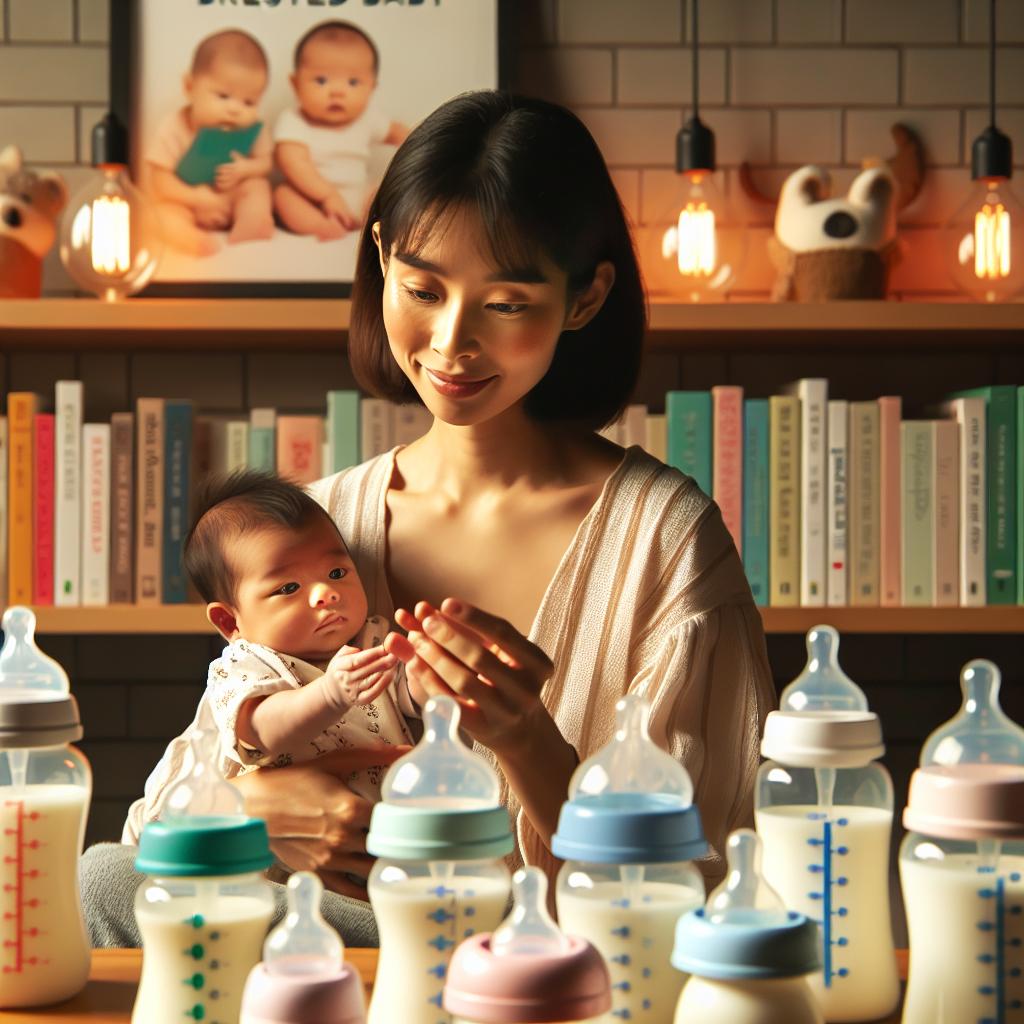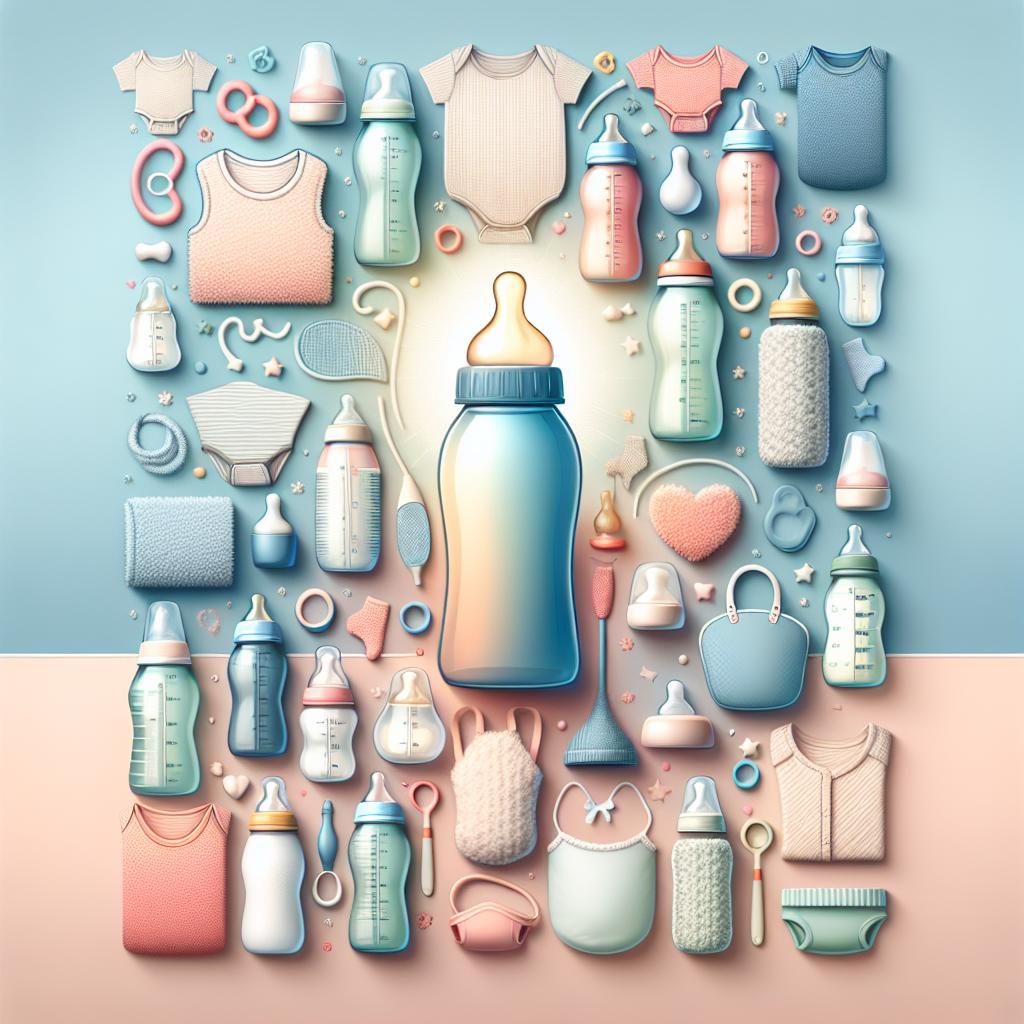What Makes a Baby Picky?
Understanding why your baby may be classified as a ‘picky feeder’ is important. A picky breastfed baby, or selective baby, might reject the bottle or be particularly choosy when it comes to different bottle designs and materials. Although this can be frustrating for parents, it’s crucial to remember that every baby is unique with individual preferences. Some infants may prefer the direct skin contact of breastfeeding, while others might be sensitive to the baby bottle’s design, material, or milk flow.
How to Identify a Picky Feeder
There’s no one-size-fits-all when it comes to feeding babies – especially for breastfed ones. Here are some signs that your baby might be a picky feeder:
- They accept breastfeeding but reject bottle-feeding
- They only accept certain types or brands of bottles
- They fuss or cry during feedings
- They drink less milk than expected
If you’re unsure whether your baby is a picky feeder or experiencing other feeding issues, consult with a healthcare professional or a lactation consultant.
Choosing The Best Bottles for Picky Breastfed Babies
Selecting the perfect bottle for your selective baby can be a daunting task, but the right bottle can make all the difference. Here are some suggestions from experts and experienced moms for the best bottles for breastfed babies.
1. Look for Breast-Like Nipples
To mimic breastfeeding, choose bottles with nipples designed to resemble a mother’s breast. This will make the transition easier for your baby.
2. Consider the Flow Rate
Slow-flow nipples are generally more suitable for newborns or breastfed babies as they allow the baby to control the milk flow, similar to breastfeeding.
3. Quality Materials Matter
Prioritize bottles made from high-quality, safe materials. BPA-free plastic, glass, or silicone bottles can be good options.
4. Easy to Clean
Choose bottles with fewer parts and wide openings, making them easier to clean and sterilize.
If you are still struggling, take a look at some breastfeeding moms sharing their experiences on Reddit or the expert reviews at Wirecutter and The Bump.
Strategies to Get Your Picky Breastfed Baby to Accept a Bottle
Despite having the ‘perfect’ bottle, some infants might still resist bottle-feeding. Here are some tips from a mom and a mother’s breastfeeding-to-bottle-feeding journey that can help ease the transition.
- Try a paced bottle feeding method. This method mimics breastfeeding by allowing the baby to control the feeding pace.
- Stay patient and consistent. This isn’t a process that can be rushed.
- Offer a bottle when the baby is calm and not overly hungry.
- Allow someone else to feed the baby with a bottle. Babies can smell their mothers, which might make them insist on breastfeeding.
Remember, it may take time for your baby to accept the bottle. The most important factor is that your baby is being fed, growing, and developing appropriately.
Additional Tips for Choosing the Perfect Bottle
Further considerations should be taken into account when selecting the perfect bottle for your picky baby. These include:
5. Base Your Choice on Your Baby’s Age
Consider the age of your baby while choosing the bottle; newborns and older infants may require different types or sizes of bottles.
6. Select a Bottle that Prevents Air Ingestion
Bottles that have vents, straw-like components, or angled shapes may help prevent your baby from swallowing air during the feed, thereby reducing the chances of gas and colic.
7. Consider Your Baby’s Feeding Style
Some babies prefer to feed in a certain position, such as upright or reclined; therefore, the shape and size of the bottle should accommodate your child’s preferred feeding style.
To aid your selection, consider reading through the comprehensive guides on picking the best bottles for breastfed babies on Serenity Kids, Today’s Parent, and Milk Drunk.
Preparing Your Baby for Bottle Feeding
After you’ve found the perfect bottle, it’s important to prepare your baby for the change. Here are some strategies you could implement:
- Introduce the bottle gradually: Start with one bottle feed a day, and gradually increase the number as your baby gets comfortable.
- Use skin-to-skin contact: Hold your baby close during bottle feeds to maintain the closeness that your baby associates with breastfeeding.
- Switch between bottle and breast: This could make the transition smoother for your baby.
Helpful hints and further insights can also be found in this in-depth Forbes’ Baby Bottle Shopper Guide.
Understanding Your Baby’s Feeding Cues
Actively observing and understanding your baby’s feeding cues can go a long way in easing their transition from breast to bottle. Here’s what to look out for:
- Early Hunger Cues: These include moving their hands to their mouth, moving around more, or making sucking sounds.
- Mid Hunger Cues: Look out for increased movement and squirming, turning their head to look for the breast, or getting frustrated when they can’t find it.
- Late Hunger Cues: Crying and fussiness indicate that your baby is very hungry and needs to be fed immediately.
Respect your baby’s cues and respond promptly. This will aid in forming a positive feeding relationship between you and your baby.
Patience and Persistence
Transitions are never easy, even more so for infants tackling something as crucial as feeding. Patience, persistence, as well as a flexible mindset are paramount. Try not to stress if your baby initially resists the bottle. Keep trying and eventually your baby will adapt to the new method of feeding. Remember, every child is different and what works for one may not work for another, but with time and patience, your child will learn to accept bottle-feeding.



